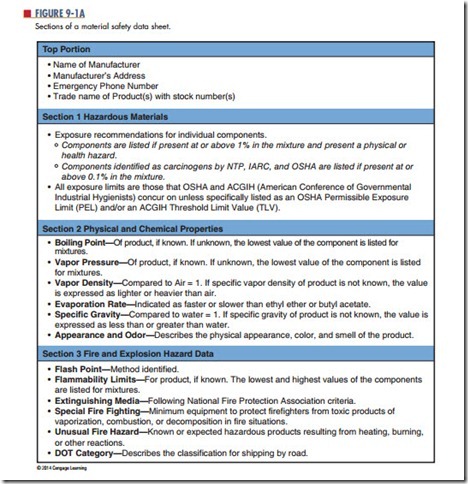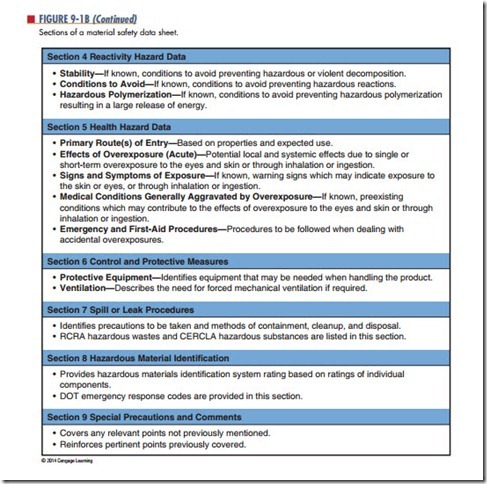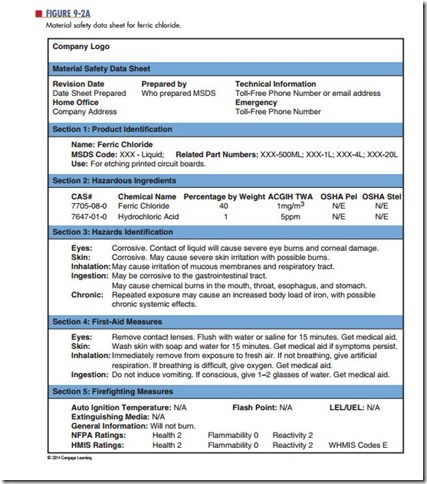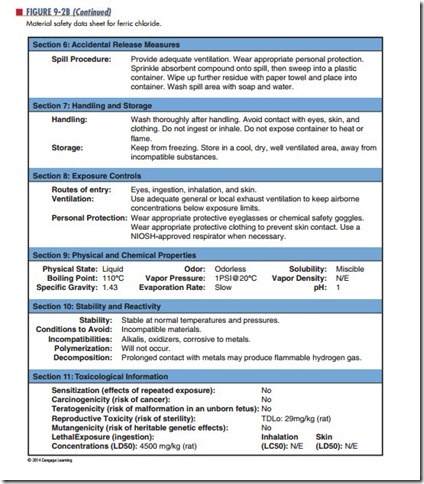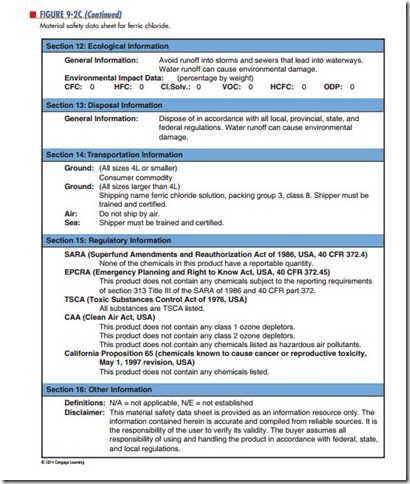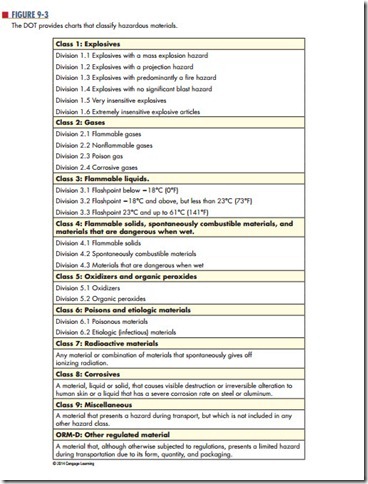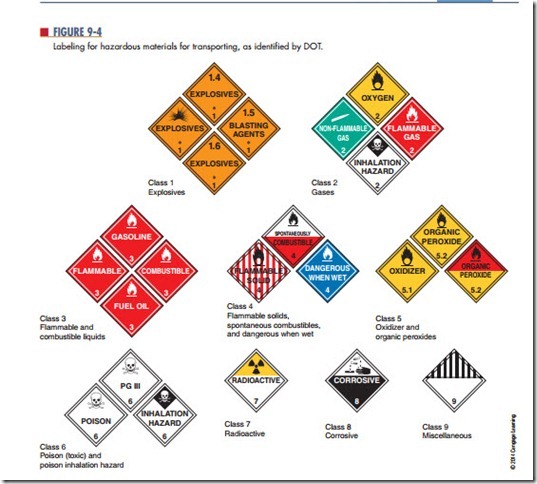Classification Of hazardous Materials
A hazardous material is any material that is capable of harming physically or causing an illness to an individual.
On October 15, 1966, the Department of transportation (DOt) was established by an act of Congress. April 1, 1967, was the DOT’s first official day of operation.
The DOT was given broad authority to regulate the transportation of hazardous materials. This authority includes the discretion to determine what materials are classified as hazardous.
Hazardous materials are broken into nine categories based on their chemical and physical properties. Figure 9-3 is a chart for classifying hazardous materials by the DOT.
Based on the classification of the hazardous material, the DOT is responsible for determining the appropriate packaging materials for shipping or trans- port. Packing groups are used to indicate the degree of risk a hazardous material may pose when in trans- port. Packing groups are always represented by roman numerals that indicate the type of packaging required for the hazardous materials as well as quantity limits allowed. The groups are shown below:
● Packing Group I—High danger
● Packing Group II—Moderate danger
● Packing Group III—Low danger
Also, based on the material classification, there are strict guidelines for proper labeling or marking of packages with hazardous materials to be transported and for signs on the transport vehicles (Figure 9-4).
